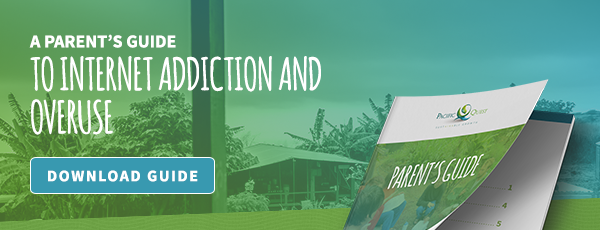Technology is changing the world we live in, forcing an evolution in how all of us communicate. Smartphones are altering the way we interact with friends and loved ones, how we receive our news, and how we access entertainment. It’s powerful, ubiquitous, and unfortunately highly addicting for some individuals.
Before the widespread use of cell phones, Internet addiction was already a serious problem for both adults and teens. But now that many children have a smartphone in their pocket by age 12 or even younger, the threat of online dependence is everywhere. As with any obstacle when raising children, there is always hope. In monitoring Internet over-usage and overcoming Internet addiction, consider the following guidelines:
Create Boundaries
In a new research study by Pew Research Center, nearly one in four teens reports that they’re online “almost constantly,” while 94 percent of teens report that they use the Internet daily. The risks of this level of usage is profound, and smartphones often exacerbate the problem.
Create boundaries in the home or in school to ensure that Internet usage doesn’t reach the level of addiction. They can limit usage during certain events, such as dinnertime or while doing homework. Many teens check Facebook before they go to bed or even wake up in the middle of the night to browse the web. Limit their access to mobile devices at night with a designated charging station outside of their bedroom.
Monitor Usage
The Internet is full of possibilities for distraction. Teens can engage with social media, play online games and even experiment with more dangerous behaviors like cybersex and gambling.
In a study published by EMBO Reports in 2014, Patricia Wallace said, “A plethora of online environments offers a multitude of experiences from a psychological perspective, each with compelling features that can lead to problem behavior.” In other words, there are online activities available that appeal to each personality type, so both introverted and extroverted teens are at risk for dependence and Internet addiction.
As a result, parents may need to look out for behaviors that they don’t typically classify as risky. Extroverts, for instance, might become addicted to social media and develop what Wallace calls the “fear of missing out.” These social platforms can actually “reduce feelings of well-being in adolescents,” further compounding the problem. See how your child uses the Web and check for overuse in addition to sensitive content.
Symptoms of Internet Addiction
Internet addiction may affect your teen in a number of ways. Symptoms may include:
- Physical: headaches, blurred vision, sleep loss, changes in eating and carpal tunnel syndrome
- Social: withdrawing from friends, family, and extracurricular activities
- Mental: lower grades, loss of interest in hobbies
- Emotional: irritability or preoccupation when not using the Internet
Wilderness Therapy as a Treatment Option
By working to prevent Internet addiction, parents can help their teens, whether they’re looking for acceptance, or a way to escape depression and anxiety, combat Internet addiction through high-level support. If you feel your teen is already addicted to the web, wilderness therapy may help. Wilderness therapy has been shown to be an effective method for treating Internet addiction, primarily due to the focus on the mind-body connection, and the importance of nature and the teen’s place within the community. Additionally, it includes the essential aspects of clinical care by focusing on the individual, family and group therapy.
If you think your teen needs more help than you can provide to overcome their Internet addiction, see how Pacific Quest can help by downloading our free guide: A Parent’s Guide to Internet Addiction in Teens and Young Adults.
